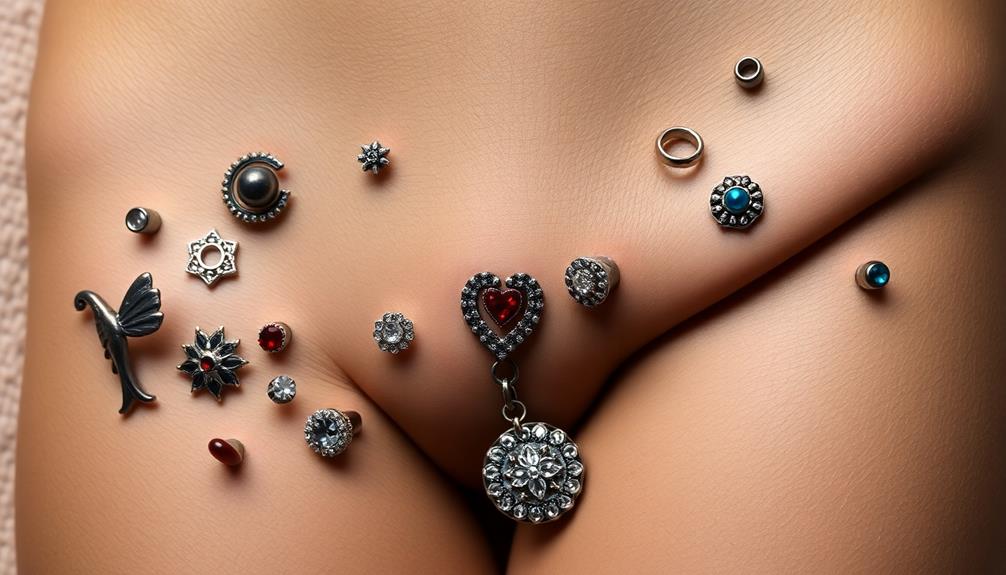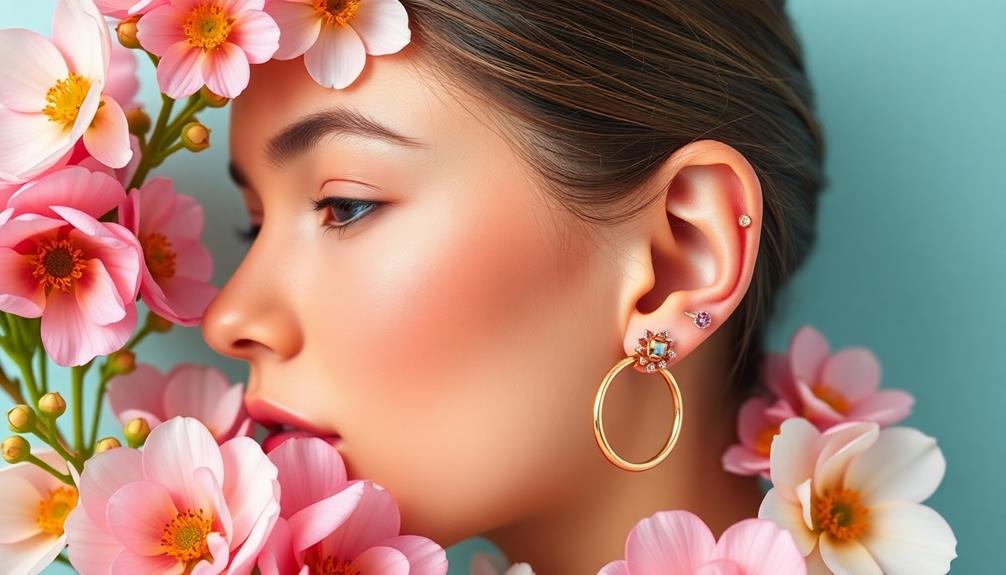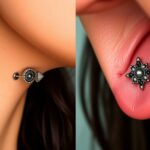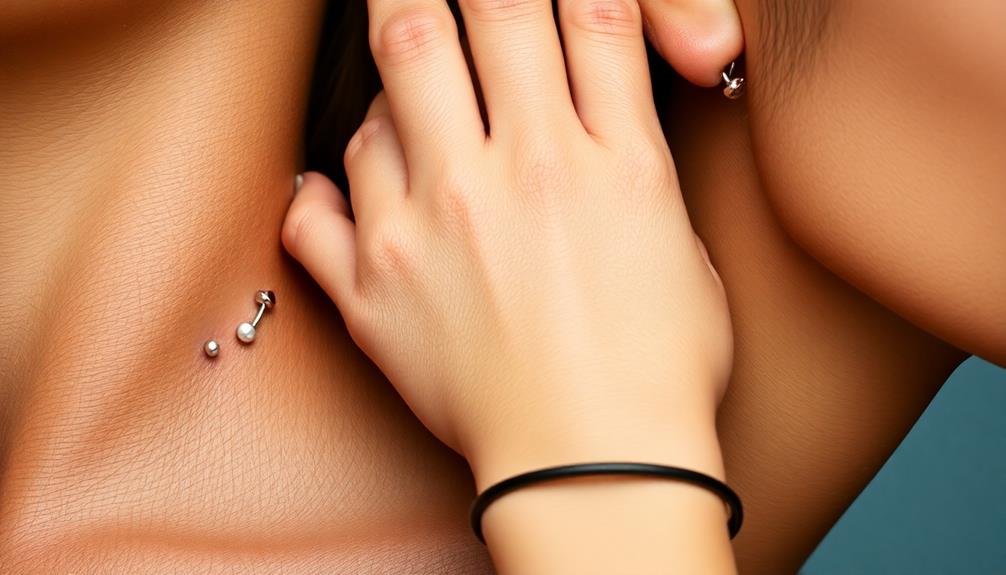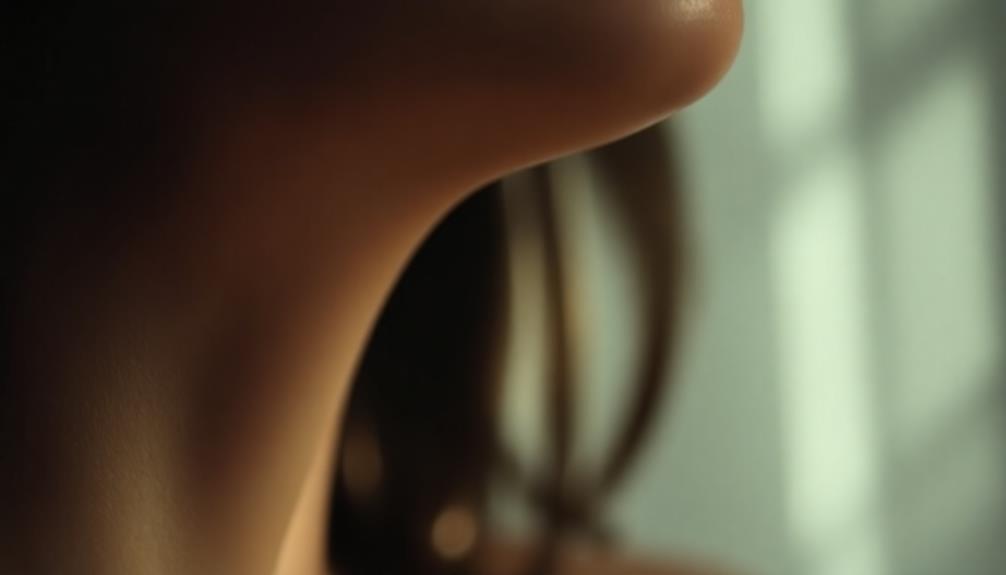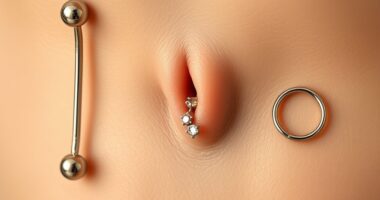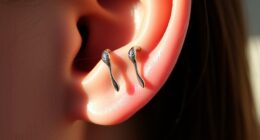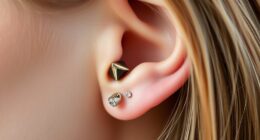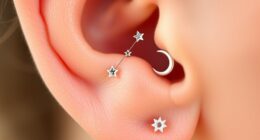Genital piercings, like the Vertical Clitoral Hood and Prince Albert, can enhance sexual pleasure and sensitivity. They come with risks, including infections, nerve damage, and allergic reactions. Healing times vary, with most taking 4-8 weeks. Proper aftercare is essential; regular cleaning and avoiding irritation help prevent complications. You'll want to reflect on how a piercing can affect your sexual experiences, as many find it increases arousal for themselves and their partners. Remember, choosing a skilled piercer and using quality jewelry minimizes risks. Discovering the right piercing for you can lead to exciting experiences ahead.
Key Takeaways
- Genital piercings include types such as VCH, HCH, Triangle, and Prince Albert, each offering unique benefits and sensations.
- Risks involve infections, nerve damage, allergic reactions, and potential complications like urethra narrowing in males.
- Healing times vary: VCH and PA typically heal in 4-6 weeks, while Triangle piercings can take 12-18 weeks.
- Genital piercings can enhance sexual pleasure and arousal, increasing sensitivity and partner stimulation during intimate activities.
- Proper aftercare is crucial, including regular cleaning and monitoring for infection signs to ensure safe healing.
Overview of Genital Piercings
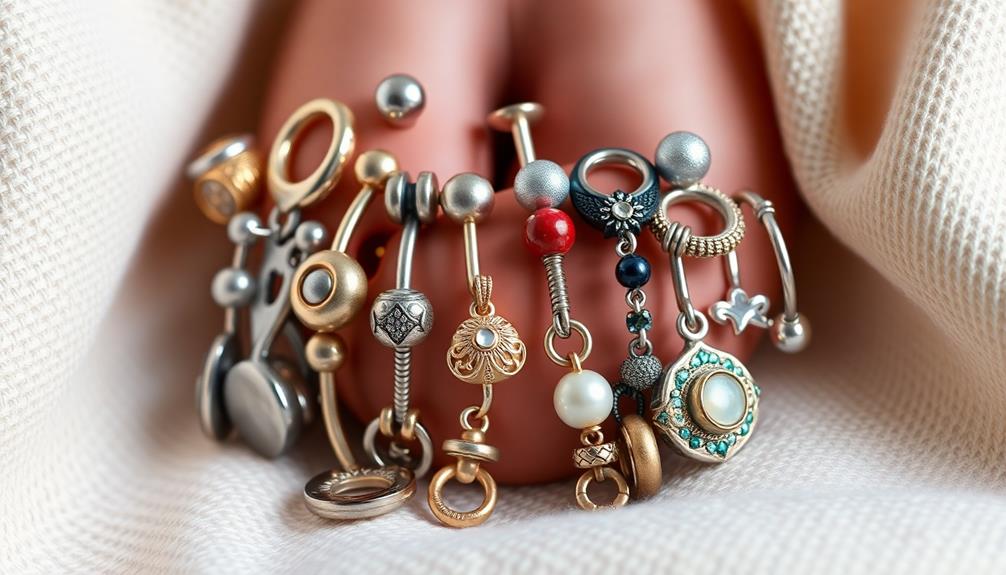
When it comes to body modifications, genital piercings stand out for their unique placements and potential benefits. These piercings can vary in types, such as the Vertical Clitoral Hood (VCH), Horizontal Clitoral Hood (HCH), Triangle, and Prince Albert (PA), each offering distinct stimulation and enhancement of sexual pleasure.
Many individuals experience increased sensitivity and arousal from these modifications, particularly from VCH and Triangle piercings.
However, it's important to take into account the risks involved. Common risks include infections, nerve damage, and allergic reactions. For male piercings, complications like urethra narrowing can arise.
Healing times also differ, with VCH and HCH typically healing in 4-8 weeks, while Triangle piercings may take 12-18 weeks for full recovery.
Proper aftercare is vital for minimizing infection risk. This includes regularly cleaning the area with saline solutions and avoiding tight clothing during the healing period.
Types of Genital Piercings
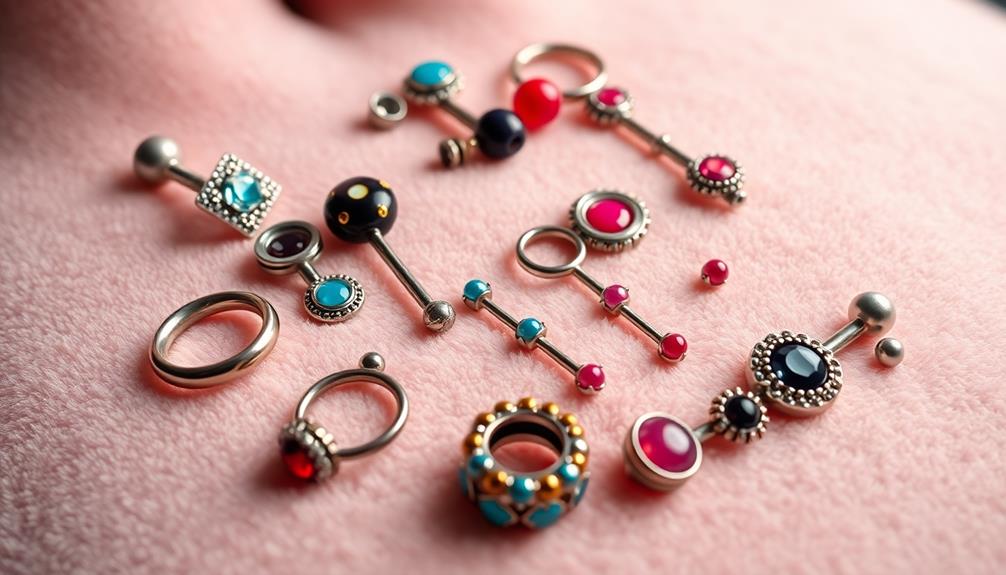
Genital piercings come in various types, each designed to enhance both aesthetic appeal and sexual pleasure. One of the most popular female genital piercings is the Vertical Clitoral Hood (VCH), which typically heals within 4-6 weeks and can greatly boost clitoral stimulation during sexual activity.
Another option is the Triangle piercing, located horizontally beneath the clitoral shaft, known for its ability to stimulate internal clitoral parts; however, it requires specific anatomical suitability.
For males, the Prince Albert (PA) piercing is a popular choice, designed to increase sensitivity and also healing within 4-6 weeks.
When considering these genital piercings, it's vital to choose skilled body piercers who utilize proper piercing techniques with sterile needles and suitable types of jewelry. The healing phase is important, as it can affect the overall experience and benefits of the piercing.
While many enjoy the enhanced sexual stimulation that these piercings can provide, it's important to remain aware of the risks associated with genital piercings.
Risks and Complications
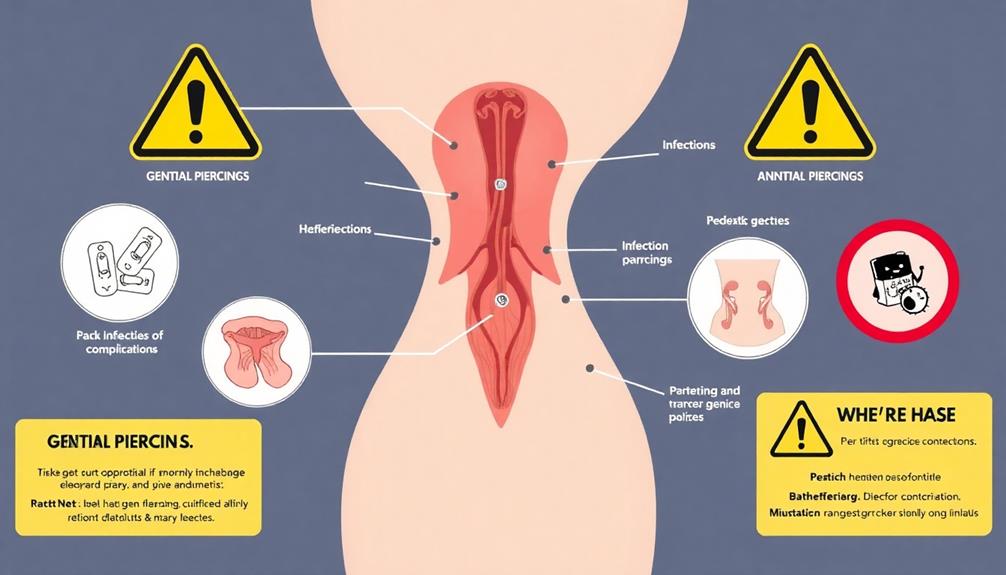
Undergoing a genital piercing carries inherent risks that you should be aware of before making a decision. Common risks include bacterial infections, bleeding, and nerve damage, which can lead to complications such as pain or sensitivity loss. You might also experience allergic reactions to jewelry materials, particularly nickel, so using high-quality materials like surgical stainless steel or titanium is imperative.
Additionally, there's the risk of bloodborne infections, including hepatitis B, C, and HIV/AIDS, if unsterilized equipment is used during the piercing process. For male genital piercings, specific complications may arise, such as urethra narrowing and even impotence, making careful assessment and professional evaluation essential.
To minimize these risks, proper aftercare and hygiene practices are critical. Neglecting these could result in severe inflammation or the need for surgical intervention.
It's also important to reflect on your pain tolerance, as the process varies for each person. By staying informed and taking necessary precautions, you can better navigate the risks and complications associated with genital piercings.
Sexual Benefits and Experiences

While understanding the risks and complications associated with genital piercings is important, many choose to undergo them for the potential sexual benefits they offer.
Genital piercings, like clitoral hood piercings, can greatly enhance sexual arousal and pleasure. Many individuals report the following benefits:
- Increased Sensitivity: Piercings can lead to heightened sensitivity, making every touch feel more intense.
- Enhanced Partner Stimulation: The presence of piercings can enhance partner stimulation, increasing overall arousal during intimate moments.
- Pleasure During Intercourse: Certain designs, like the triangle piercing, provide internal stimulation, enhancing pleasure during penetrative sex.
- Aesthetic Dimension: The visual appeal of genital piercings adds an exciting aesthetic dimension, potentially increasing partner attraction and excitement.
Ultimately, these factors contribute to enhanced sexual experiences, making intimacy more pleasurable.
However, it's important to remember that the risk of infection exists, and proper care must be taken to enjoy these benefits fully.
As you explore the world of body piercing, you may find that the rewards can far outweigh the risks when approached with caution and awareness.
Aftercare and Maintenance
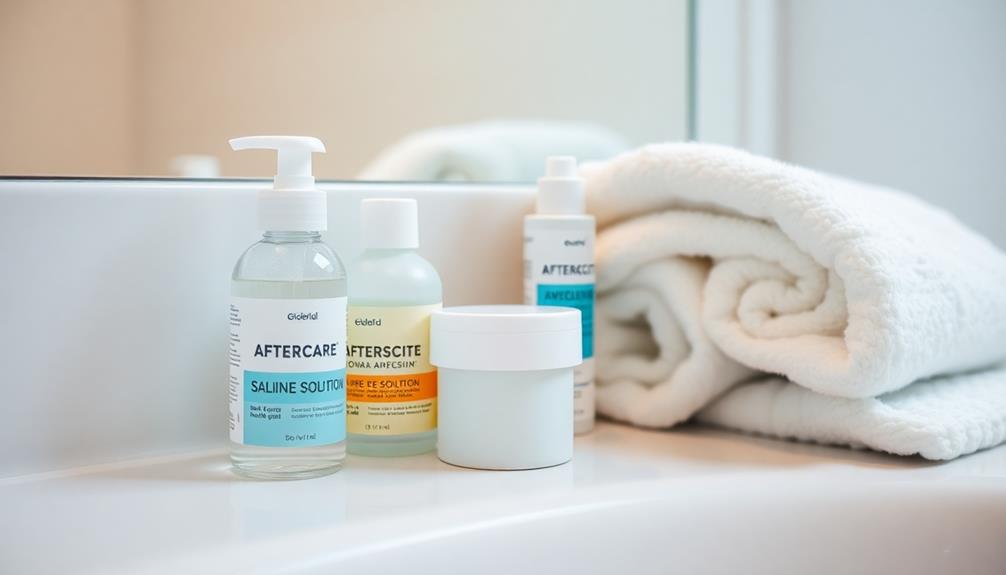
Caring for your new piercing is essential to guarantee a smooth healing process and prevent complications. Start by cleaning the piercing site regularly with a saline solution, which helps promote healing and prevent infection.
Remember to wash your hands before touching the area to maintain hygiene and reduce the risk of introducing bacteria. During the healing process, avoid handling the piercing, as this can lead to irritation and increase the chance of infection.
It's important to refrain from sexual intercourse for at least two weeks post-piercing. This allows your body to heal properly and minimizes the risk of complications.
Keep an eye on the piercing during this time; monitoring for signs of infection, such as redness, swelling, discharge, or a foul smell, is critical. If you notice any concerning symptoms, don't hesitate to consult a healthcare professional.
Frequently Asked Questions
Are Genital Piercings Safe?
You should consider the safety of genital piercings carefully. While many people have successful experiences, risks like infections and complications exist. Proper hygiene and aftercare are essential to minimize these risks and promote healing.
What Is the Riskiest Piercing?
Imagine maneuvering a tightrope; the Prince Albert piercing often feels like that—balancing beauty with danger. It's considered the riskiest due to its sensitive placement, where complications like infection or urethral narrowing can occur.
What Are the Complications Associated With Intimate Body Piercings?
When considering intimate body piercings, you might face complications like infections, allergic reactions to materials, or specific issues like urethra narrowing. Proper aftercare and professional evaluation can help minimize these risks and guarantee safe healing.
Conclusion
In the vibrant tapestry of self-expression, genital piercings can add a bold stitch, weaving together beauty, intimacy, and risk. While they offer unique sensations and deepen connections, it's crucial to tread carefully, honoring both your body and your desires. By understanding the nuances and committing to proper aftercare, you can transform this journey into a celebration of pleasure and self-discovery. Embrace the adventure, and let your body tell its own enchanting story.
Hi, my name is Danielle, and I’m an author for piercings-body.com. I have a passion for writing and love to share my knowledge on all things body piercing-related. I’m also a huge advocate for safe body modification practices and believe everyone should be able to make informed decisions about their bodies. When I’m not writing or blogging, I enjoy spending time with my family and friends, practicing yoga, and exploring new places.

